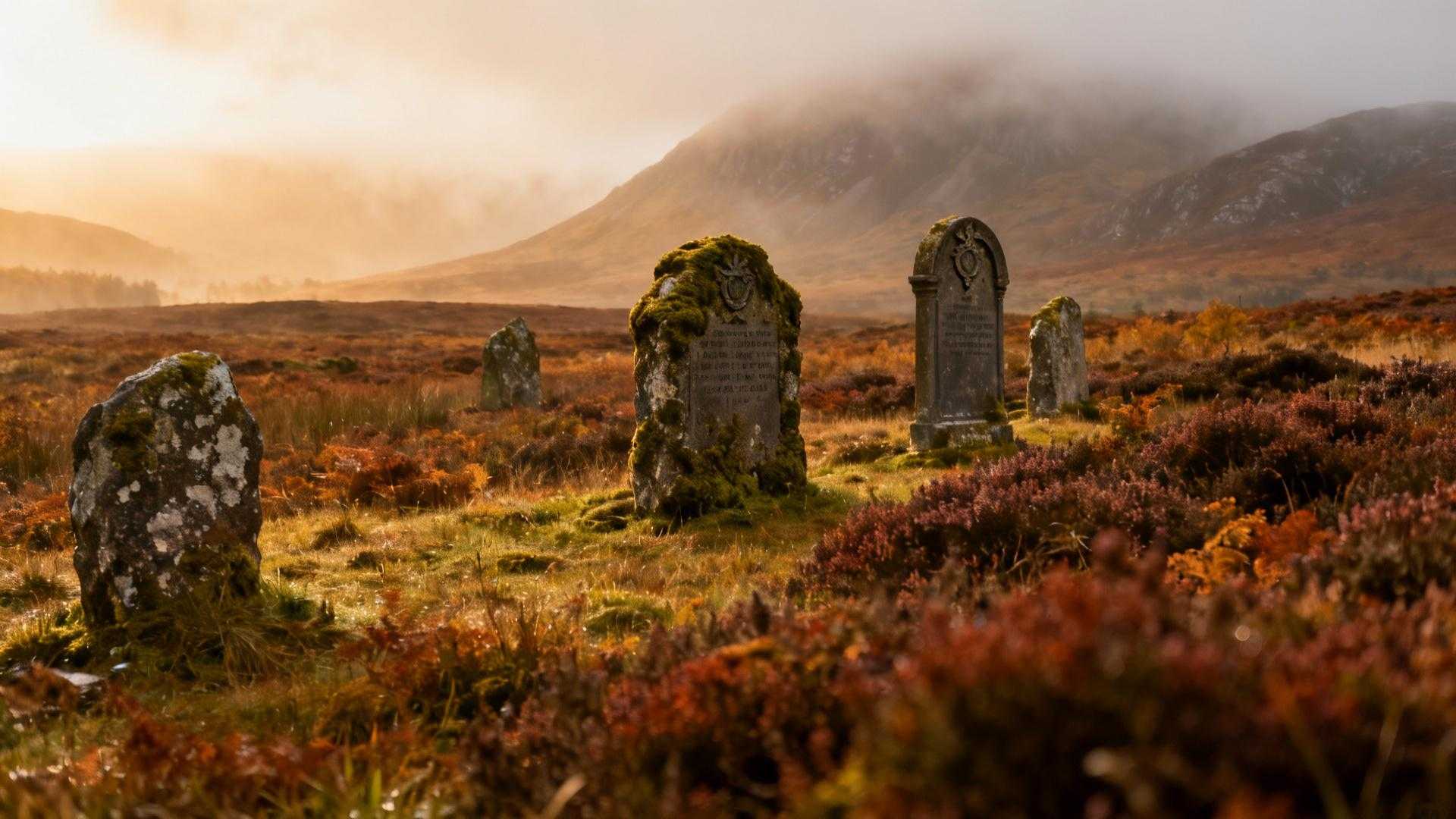Walking across Culloden’s windswept moor in October 2025, you’ll discover something no other British battlefield can offer: individual clan grave markers where 1,500 Highland warriors still rest beneath your feet. This haunting stretch of Scottish moorland near Inverness represents the only place on British soil where visitors can stand among authentic burial sites from the last pitched battle fought in Britain, creating an experience that demands reverent silence rather than casual tourism.
Unlike crowded Hastings or commercialized Bosworth, Culloden preserves something sacred. The battle that ended on April 16, 1746 lasted just one brutal hour, but its aftermath created Britain’s most profound battlefield cemetery. Here, beneath weathered clan stones erected by Duncan Forbes in 1881, lie the remains of Fraser, MacLean, and Cameron clansmen who fell defending their Highland way of life.
What makes this battlefield absolutely unique isn’t just its historical significance—it’s the fact that you’re walking through an active burial ground where graves lie just one foot beneath the surface. No other British battlefield offers this combination of archaeological authenticity and spiritual weight, making Culloden a pilgrimage destination rather than a tourist attraction.
The sacred ground that no other battlefield preserves
Individual clan burial markers tell personal stories
Culloden’s clan-specific headstones create an intimacy impossible at other British battlefields. Each weathered marker—Fraser, Stewart, MacGillivray, and others—identifies precisely where different Highland clans made their final stand and were buried in shallow mass graves. The most recognizable Clan Fraser stone has suffered damage from excessive tourism, highlighting the delicate balance between historical access and sacred preservation.
The 20-foot memorial cairn anchors Highland memory
Forbes’ towering stone cairn stands as the battlefield’s emotional center, visible across the entire moor. This monument marks not just a military defeat, but the systematic destruction of Highland clan culture. Unlike natural wonders that inspire awe through beauty, Culloden’s monuments demand contemplation of profound cultural tragedy.
National Trust Scotland’s protective stewardship approach
Highland communities guard battlefield dignity
The National Trust Scotland manages Culloden with strict conservation protocols designed to protect both landscape and sacred character. Recent damage from Outlander tourism—with visitor numbers increasing 30% after the series aired—has forced temporary cordoning of popular grave areas to allow grass regrowth and soil recovery.
Cultural protocols ensure respectful Highland engagement
Highland communities view this battlefield as sacred ground requiring absolute silence in burial areas, no selfies with gravestones, and understanding that 1,500 Jacobite and 50 Government soldiers remain buried beneath visitors’ feet. Local stewards emphasize approaching Culloden as a memorial rather than entertainment, distinguishing it from more commercialized British historical sites.
October 2025 offers optimal pilgrimage conditions
Atmospheric Highland weather enhances contemplation
October’s misty moors and dramatic skies create the somber ambiance appropriate for reflecting on Highland cultural devastation. Fewer crowds than summer months allow for the quiet contemplation this sacred ground deserves, while autumn heather adds natural beauty that honors rather than distracts from the site’s solemnity.
Visitor centre provides essential historical context
Current admission costs £12.50 for adults, with the immersive 360-degree battle cinema placing visitors within the conflict before battlefield exploration. Like transformative memorial sites worldwide, Culloden’s visitor centre ensures understanding precedes emotional experience, preparing visitors for sacred ground encounter.
Authentic Highland features preserved nowhere else
Government and Jacobite flag lines mark exact battle positions
Culloden’s restored landscape matches its 1746 appearance, with flag lines showing precisely where opposing armies faced each other across Drumossie Moor. Visitors can walk between these positions, understanding tactical decisions that led to Highland defeat and cultural suppression within minutes of battle commencement.
Leanach Cottage and Cumberland’s Stone provide battlefield context
The thatched Leanach Cottage, built on the original field hospital site, and Cumberland’s Stone, marking where the Duke directed Government forces, create tangible connections to individual experiences during and after battle. Unlike preserved villages protecting charm from tourism, these features preserve tragedy for education and remembrance.
Essential questions for respectful Culloden pilgrimage
What makes Culloden different from other British battlefields?
Culloden is the only British battlefield where visitors walk among authentic burial sites with individual clan markers. The combination of being the last pitched battle on British soil and preserving actual graves creates an experience impossible at Hastings, Bannockburn, or other historical sites.
How should visitors approach this sacred Highland site?
Highland communities expect absolute reverence: maintain silence in burial areas, avoid photography with gravestones, never walk directly on graves, and understand you’re visiting an active cemetery where warriors rest one foot beneath the surface. Approach as pilgrimage, not tourism.
What’s the best time for contemplative battlefield visits?
October through March offers fewer crowds and atmospheric Highland weather that enhances the moor’s haunting character. The visitor centre operates year-round, but battlefield access remains available regardless of opening hours for those seeking quiet reflection.
Culloden demands approaches befitting sacred ground where Highland culture suffered its most devastating blow. October 2025 visitors have the privilege of experiencing Britain’s most profound battlefield with the cultural sensitivity Highland communities rightfully expect, making this an incomparable destination for those seeking authentic engagement with Scotland’s most tragic historical site.
